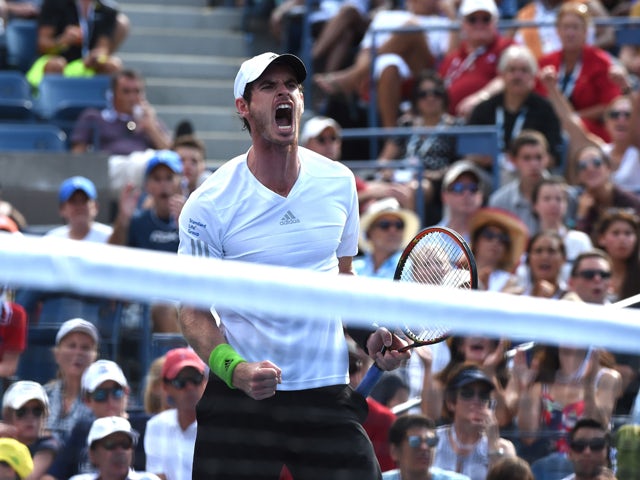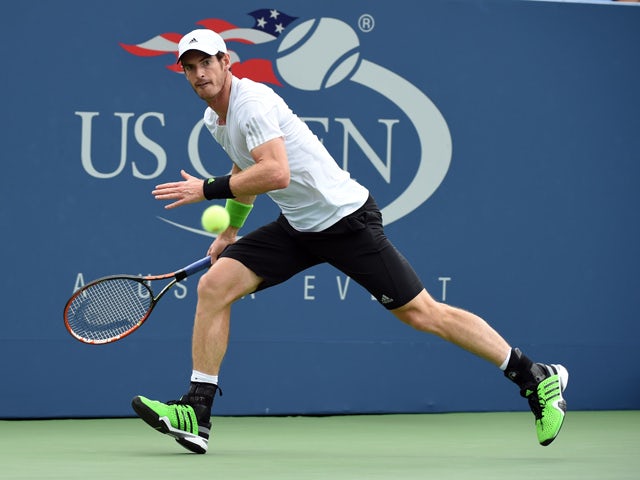When Andy Murray lost nine games in a row against Robin Haase in the opening round of the US Open, the negative headlines were already being written, a storm of criticism from social media was ready to meet the British number one full in the face and above all else, the 27-year-old was seemingly going to be left with plenty of soul-searching ahead of the final part of the year.
However, after Murray defied cramp in several parts of his body to overcome the Dutchman in four sets, that experience has almost proved to be a blessing in disguise. The Scot maintained his stance that he had prepared appropriately for Flushing Meadows, and that the drop in physical performance in the exhausting heat was down to something not being eaten or drank at the necessary time.
For a man who has been playing professional tennis for almost 10 years, it seemed an odd miscalculation to make at his second most important tournament of the year, but after he rocked up seemingly in full health for his next match with Matthias Bachinger, there appeared little reason not to take Murray's word at full value after he showed no weakness in storming past the German, who had easily dispatched of Radek Stepanek in the previous round.
A solid win against Andrey Kuznetsov followed to set up an encounter with Jo-Wilfried Tsonga, the Frenchman who had overpowered Murray on his way to lifting the Rogers Cup in the previous month. Murray had beaten the former Australian Open finalist in eight of their previous 10 meetings, but the general feeling was that this was a 50-50 contest, and it's one in which Murray needed to triumph to break the streak of failing to defeat a top-10 player for 14 months.
Unlike in Toronto, a different, more offensively-minded Murray turned up, taking his chance to attack the second serve of his opponent at every given opportunity, and it paid off as he won two tightly-fought sets. The third looked to be going the way of Tsonga, but there was a sturdiness about the 2013 Wimbledon champion that deflated Tsonga both physically and mentally, and the toughness that was there in Canada quickly evaporated as he lost his serve in the final game of the match to gift Murray the all-important triumph.
 © Getty Images
© Getty Images
As soon as that last point was won, all eyes turned to Murray's quarter-final tie showdown with Novak Djokovic - a repeat of the 2012 final, a renewal of a storied rivalry and a chance for Murray to showcase himself in front of 18,000 fans on Arthur Ashe Stadium against the best player in the word. Apart from Centre Court at Wimbledon, it's arguably the greatest setting in tennis.
Even as the two players warmed up, there was an air of anticipation about two colossal competitors going toe-to-toe under the lights in New York, and from the very first point, in which Murray fired a backhand return out of the reach of Djokovic, it soon became apparent that none of the supporters in attendance or the millions watching around the world was going to be disappointed with what was about to transpire.
The first set were brutal, even for the hardcore tennis faithful. Murray promised much but didn't always deliver while Djokovic seemed to possess the greater match sharpness that would inevitably prove crucial. But after Djokovic had 4-1 and a 0-30 advantage on Murray's serve, the Scot started to display a mixture of relentless power and court nous to take the set into a tie-break, but from a Murray perspective, the less said about that, the better.
The next set followed a similar pattern. Murray was competitive, but on the big points, Djokovic always appeared to have a slight edge and he soon opened up a 3-1 lead. There were fears that the Serbian maestro could canter through to another semi-final appearance at Flushing Meadows, but like in the first set, Murray overturned the deficit to establish a slender lead but an even greater sense of momentum. The tie-break that concluded the set was as one-sided in the Scot's favour as it was against him earlier in the match.
With the crowd behind him and Djokovic's back showing signs of stiffening up, Murray was in the ascendancy but in the fourth game of the third, the world number one produced the kind of return game that only a select few players in history have been capable of, and it sucked much of the belief out of Murray as he was left a break down for the third set in a row, but on this occasion, rather than another fightback, it was the beginning of the end for the Scot at this year's tournament.
 © Getty Images
© Getty Images
After coasting through the third set, Djokovic sensed blood, although he couldn't quite find the decisive blow in the fourth that would completely discourage Murray who, at this point, was running on empty. The eighth seed should be applauded for showing the kind of resilience that has made him a star over the past few years but he was always fighting a losing battle and after just over three-and-a-half hours, Djokovic pulled through.
As he reflects on his efforts in New York, Murray's competitive nature will result in his initial feelings being ones of disappointment, but when he sits down with his team and assesses what he achieved at the tournament and where he's at a year on after his back surgery, he has every reason to be optimistic about what lies ahead in the final two months of the year.
In several of his matches this year, Murray's court manner suggested that he had fallen back into old habits that saw him fail to match the best players but throughout the North America swing, especially against Tsonga and Djokovic, he showed that he is slowly becoming more proactive with his tennis rather than reactive. A testament to his improved mindset from an attacking perspective was how he engineered 16 break-point opportunities against Djokovic, with the majority of them coming in the first three sets. You don't achieve that unless you are nearing your best form.
If his body holds up, Murray's main issue for the rest of the year will be trying to earn a place in the ATP Tour Finals in London. He insists that it's not a major goal of his to play at the O2 Arena, but he needs to make a considerable effort to make the tournament so that he can start the Australian Open in January in the top eight seeds.
When the US Open is done and dusted, Murray is likely to find himself in 10th place in the race for London, and with just three, potentially four, tournaments remaining in his schedule for the year, he has it all to do if he is to overtake his nearest rivals. However, if the 27-year-old can adopt the same approach in Asia and during the indoor campaign, a season of gradual improvement can still bring significant rewards ahead of what is looking like a pivotal year in 2015.
No Data Analysis info







